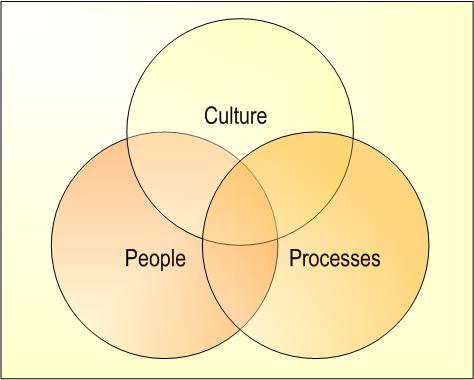Both technology providers (like us) and technology users can run into big problems when we fail to understand the importance of change in our technology initiatives. Living through a big technology project is one of the biggest changes most of us in business experience. For this reason, we ought to first ask “what business problem does this technology project solve”, meaning it is really worth the pain? Is it compelling: will it reduce a risk (solve a big problem), save us time (make us more productive), or save us money?

Change management formalizes the process of introducing changes to information technology in an organization. It provides an important set of controls that can reduce financial loss due to systems outages or changes, greatly reduce lost productivity through the change process, and enhance overall availability of systems. For businesses, there are 4 key characteristics of an effective change management process:
- Institutionalized project and change management processes
- Senior-level sponsorship of the project, articulating the goals and the company’s commitment to this change
- Strategic communications, meaning different kinds of communications to different stakeholder groups, before, during, and after the change
- Training before the launch of the new system, and heightened support, as needed, during the initial phase so users can close the gap between the old way and the new way of doing something
By adopting a formal process, training your organization and following a structure process when changing your IT systems you will increase overall system reliability.
From a technology provider’s standpoint, I place almost all technology projects into one of two buckets: 1) improvement projects (on the steady state), and 2) enabling projects (introducing a new capability). Steady state projects include projects like upgrades to current software, hardware, phone systems, or internet circuits. Sometimes we need to do this because a software vendor declares an old version no longer supported, or the newer version has improved features we value. We may need to replace older equipment because it’s likely to fail, or the new version has significantly enhanced performance. Some of these upgrades reduce a risk (e.g. now at 99.99% reliability), save time (e.g. 30% faster performance), or save money (e.g. costs 20% less, while as fast as or faster than the old one).
Though steady state projects introduce some disruption to the organization, the IT team can often minimize the impact by running systems in parallel, doing work during scheduled maintenance windows after hours, and so on. Enabling projects, however, introduce new services and functions to the organization often impacting most users, and by extension introduce greater interruption during both the implementation phase and afterwards. Enabling projects have greater possible rewards: reduce competitive threats (risk), increase productivity (time and money), or solve a significant problem not addressed by current systems (risk). Given the greater company impact, enabling projects require greater care in 1) seeing and planning for change, 2) properly communicating the change to stakeholders, and 3) in managing change.
Projects require planning and design, technology components, proper execution, and careful change management. Having an excellent plan, great technology, and first-class execution will still result in a perceived failure by users and managers IF the change process is also not also properly managed. In technology projects, the area where many IT implementers fall short is in understanding the full impact of change on users, setting proper expectations, and then communicating properly to each stakeholder group (with the level of communications each one needs) before, during, and after the project is complete. So, in addition to first-class planning and design, technology components, and execution, add planning for change, communicating change, and managing change as requirements for any successful technology project.
I also recommend reading Tricia Emerson’s and Mary Stewart’s new book The Technology Change Book for more depth on technology change management.


